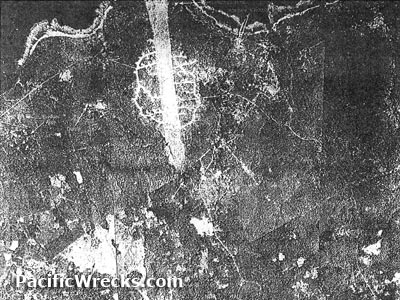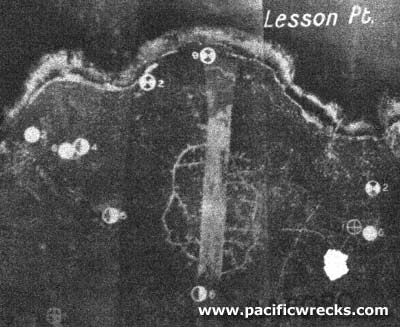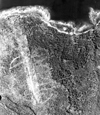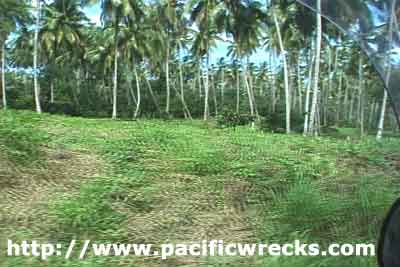|
|
|
|
| Missing In Action (MIA) | Prisoners Of War (POW) | Unexploded Ordnance (UXO) |
| Chronology | Locations | Aircraft | Ships | Submit Info | How You Can Help | Donate |
|
 5th CCU January 5, 1943  5th AF Jan 21, 1943    5th AF c1943  5th AF c1944  2/4 Armoured Regiment September 19, 1945  2/4 Armoured Regiment September 28, 1945  Justin Taylan 2000 |
Location Rapopo Airfield was located at Rapopo inland from Lesson Point on the Gazelle Peninsula of eastern New Britain. Also known as Rapopo Drome, Rabaul South, South Airfield or Rabaul No. 3. The single runway ran approximately north to south, with the northern end at Lesson Point bordering Blanche Bay and beyond to the northwest Rabaul. Between 1884 until September 1914 part of Deutsch Neu Guinea (German New Guinea). Prewar and during the Pacific War part of the New Britain District in the Territory of New Guinea. Today located in East New Britain Province in Papua New Guinea (PNG). Prewar Prewar, Rapopo Plantation and Ulaveo Plantation were established at this location and planted with coconut palms harvesting copra. Construction During late January 1942, occupied by the Japanese. During December 1942, the Japanese began construction of a single runway on Rapopo Plantation and Ulaveo Plantation. Construction methods were primitive, relying on tanks to push down coconut palm trees into trenches dug by hand. By early January 1943 a single runway was largely complete. Afterwards, taxiways and revetments were built on the east and west sides of the runway plus a flyway at the northern end to the tip of Lesson Point. Wartime History On January 5, 1943 documented by a B-17 Flying Fortresses with a photographer and cine camera aboard during a bombing mission against bombing mission against Japanese shipping IN Blanche Bay and Simpson Harbor off Rabaul. Approaching the target, a photograph and cine footage facing eastward revealed the presence of the new runway. During early January 1943, twenty Type 99 Light Bomber Kyu Kyu Sohkei / Ki-48-I Lilys from 45th Hiko Sentai were flown from an aircraft carrier at Truk southward to Rapopo and became the first unit at the new base. By January 23, 1943 they moved to Munda Airfield as a forward operating base. Used by the Japanese Army Air Force (JAAF) as a base for bombers and transports. Operationally, the runway was plagued with drainage problems and was often muddy. Also used by the Imperial Japanese Navy (IJN) with A6M Zeros to defend the Rabaul area. Rapopo was defended by at least 29 heavy anti-aircraft, 21 medium anti-aircraft and 13 light anti-aircraft guns supported by five searchlights. By October 1, 1943 the runway was expanded to 4,350' x 670'. At least ninety bomber revetments were located on the east and west sides of the runway. Japanese units based at Rapopo 45th Hiko Sentai (Ki-48 Lily) arrives Truk Jan 1943 detachment Munda departs Jan 23, 1943 transfers Wewak 14th Sentai (36 x Ki-21 Sally) NEI March 2, 1943–1943 20th Dokuritsu Dai Shijugo Chutai (Ki-21, Ki-49) Japan May 1943 By early 1943, Rapopo Airfield was detected by the Allies and repeatedly attacked by American bombers and fighters until the middle of 1944. American missions against Rapopo Airfield January 26, 1943–June 23, 1944 On September 8, 1945 Japanese forces on New Britain officially surrendered. Afterwards surviving tanks and vehicles were assembled at Rapopo Airfield. On September 19, 1945 the Australian Army 2/4 Armoured Regiment A Squadron personnel inspected forty tanks and vehicles were parked in lines including Type 97 Chi Ha medium tanks, Type 95 Ha Go light tanks, amphibious tanks and other vehicles. On September 28, 1945 the surrendered tanks were driven from Rapopo to Rabaul by Japanese drivers with Australian commanders. Afterwards, most were destroyed or abandoned. At least two of these tanks were shipped to Australia as a war prizes and today are displayed at Royal Australian Armoured Corps Museum (RAACM) including Type 97 Chi-Ha Shinhoto and Type 97 Te-Ke Tankette. At least three other tanks remained in the area and today are displayed at Kokopo War Museum including Type 97 Te Ke Tankette Kokopo Museum and Type 95 Ha Go (No Turret) Kokopo Museum. Also displayed at a roundabout in Kokopo is Type 95 (No Turret) Kokopo-Rabaul Road. Postwar Disused as an airfield since the end of the Pacific War. During the middle of the 1980s, the area was replanted with coconut palms for harvesting copra and many of the remaining wartime relics were removed or scrapped. A few relics, including a 37mm cannon from a Ki-45 were recovered for display at the Kokopo War Museum. Brian Bennett adds: "What I found interesting was that the Japanese must have been showing some interest in Allied aircraft as i found an electric bomb release switch installed in the bomb bay of what was left of a KI-21 at Rapopo, before the area was re-modeled." Today The former airfield was replanted as a coconut and coco plantation. The strip and the entire area was replanted, but revetments and tunnel entrances are still visible. Development saw most of the remaining wartime bits buried or otherwise destroyed. The Rapopo Plantation Resort owned by Brian & Beverly Martin is located to the west of the original runway. Contribute
Information Last Updated
|
Map March 12, 1943 View in Google Earth Photo Archive |
| Discussion Forum | Daily Updates | Reviews | Museums | Interviews & Oral Histories |
|